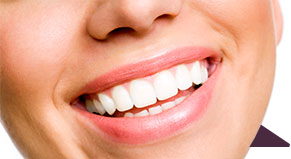 If you have been diagnosed with TMJ, you probably are well aware of the symptoms: jaw pain, clicking and locking of the jaw joint as well as difficulty of chewing. It’s something that usually can be self-diagnosed, but it’s preferred to go in for a consultation with a qualified dentist.
If you have been diagnosed with TMJ, you probably are well aware of the symptoms: jaw pain, clicking and locking of the jaw joint as well as difficulty of chewing. It’s something that usually can be self-diagnosed, but it’s preferred to go in for a consultation with a qualified dentist.
So what exactly is TMJ?
TMJ stands for Temporomandibular joint dysfunction. There are two Temporomandibular joints on each side of your head. These joints work in conjunction with ligaments, muscles, bones and discs thereby allowing you to speak, chew and yawn.
According to medical experts, anywhere from 5% to 12% of the population suffers from TMJ. Out of all these people, it occurs more often with women than men. There really is no standard for pain or symptoms with this condition. If you suffer from one or more of the symptoms, it’s generally accepted that TMJ is the cause.
Generally speaking, the symptoms of TMJ could be one or more of the following:
- Headaches
- Joint sounds
- Difficulty opening your jaw
- Burning mouth
- Difficulty chewing
Causes of TMJ
There are a variety of issues that could cause this condition to arise. Arthritis (rheumatoid arthritis and osteoarthritis), jaw injuries, long-term grinding of the teeth as well as connective tissue diseases can all contribute and/or increase the risk of developing TMJ.
However, TMJ is not an easy condition to diagnose as the symptoms could be related to other problems. In a lot of cases, the exact cause is very difficult to pinpoint. The best way to find out if you suffer from TMJ is to make an appointment. The doctor will go over your symptoms and make a diagnosis and create a treatment game plan.
TMJ Pain Treatment Options
Being that TMJ can sometimes be difficult to accurately diagnose, there are many types of treatments available. Assuming no pre-existing conditions and no allergies/drug complications, Nonsteroidal anti-inflammatory drugs (NSAIDs) are usually the first line of defense. These are more commonly found in over-the-counter pain medications that can be purchase at any local pharmacy or drug store.
Transcutaneous electrical nerve stimulation (TENS)
Tens (and Ultrasound) are two non-invasive treatments that have successfully been used to mitigate symptoms of TMJ. These procedures use either low-level electrical currents or ultrasound to relax your facial muscles and jaw joints. These procedures are usually done at the dental office.
Orthotic Appliance (Bite Guard)
Based on various testing conducted in the office, your dentist may determine that an Orthotic Appliance, or bite guard, may be a viable therapy option as well. These bite guards, which are specifically molded to your teeth, will help keep your jaw in alignment and alleviate some of the pain associated with TMJ. After a few months with the appliance we can determine whether or not the therapy worked, or if you need to continue to wear the bite guard. Sometimes the bite guard will help within the first three months, in other cases you may have to wear the bite guard for the rest of your life.
Trigger-point injections/Acupuncture
These two treatment options are slightly more invasive because they require a needle to be put into your jaw. For trigger-point injections, pain medication is injected into various areas (including facial muscles) in order to relieve the pain. It is suggested that after the pain medication has been applied, you should engage in simple facial muscle exercises in order to help strengthen the overall area.
Surgery
If you have tried all other treatment methods and are still experiencing pain, you might be a good candidate for surgery. This requires a qualified dentist to determine that the TMJ you suffer from is caused by a structural problem inside the jaw joint.
There are some people for whom surgery is the first (and only) option. If you have limited jaw movement due to displacement of a dick or if you have a severe degenerative disease, then surgery might be the right option for you.
Prior to engaging in surgery, you should make sure you understand both the risks and benefits. Your dentist will give you a rundown of what is wrong, why he/she is recommending the surgery as well as what you should expect.
Types of Surgeries to Correct TMJ
There are two types of surgeries to treat TMJ: open join surgery and arthroscopy. Each has its own benefits and is the suggested course of action due to several reasons.
Open Joint Surgery
In open joint surgery, the TMJ is operated on without the usage of video monitors or other special equipment. An incision is made in front of the ear and the joint is operated on visually. This type of surgery is recommended for people whose issues cannot be corrected with arthroscopy, there are tumors around the TMJ or the TMJ is degenerating.
Open joint surgery takes a lot longer to heal than arthroscopy. This is due to the incision and general areas of the joint that are being operated on. There are many kinds of open joint surgeries available, chat with your doctor about the one that is right for you.
Arthroscopy
This procedure requires anesthesia as the surgeon will make a small incision in front of the ear. A small camera with a light will be inserted. This will allow the surgeon to examine the TMJ and determine the best course of action. Based on what the surgeon sees, they may remove tissue or simply adjust the disk. Sometimes a second incision is made to place small corrective instruments which will help fix the problem area.
The good news is that TMJ is treatable and it tends to resolve itself within a few months in most cases. If you’re looking for a qualified TMJ specialist in Chicago, Give Dr. Aneszko or Dr. Stino a call today to schedule an appointment and finally resolve your TMJ issues!






 Website Powered by Sesame 24-7™
Website Powered by Sesame 24-7™